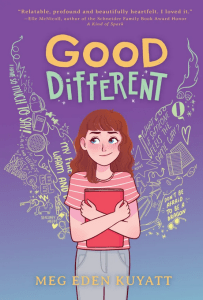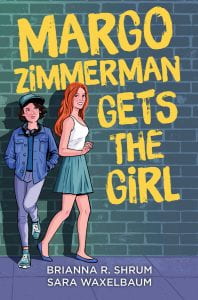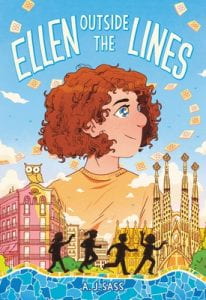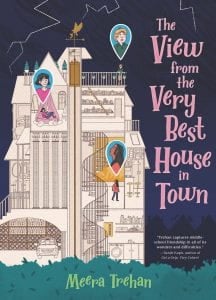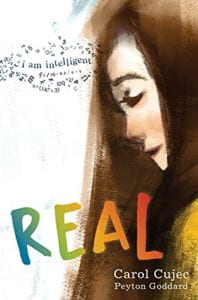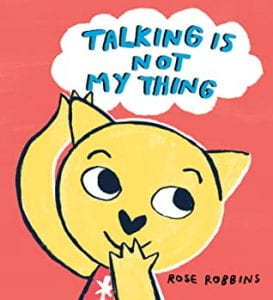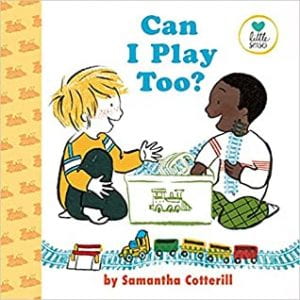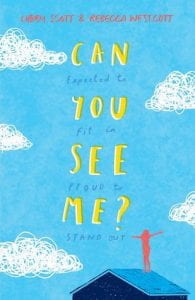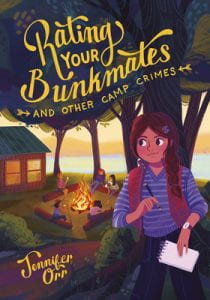 Windness, Kaz. Bitsy Bat, School Star. Simon & Schuster Books for Young Readers, 2023. 978-1-665-90505-3. Unpaged. $18.99. Grades K-3.
Windness, Kaz. Bitsy Bat, School Star. Simon & Schuster Books for Young Readers, 2023. 978-1-665-90505-3. Unpaged. $18.99. Grades K-3.
Bitsy Bat has big star dreams but is nervous. It’s her first night at a new school, and she’s worried she isn’t ready. After a quick review of raising her wing, painting friends, and sharing snacks Bitsy feels more confident in going to school. As Bitsy flies into Crittercrawl Elementary, readers will see things from Bitsy’s perspective. While the beginning of the story features the bats right side up (close observers will note them hanging not standing), Bitsy’s school looks like a typical elementary classroom with tables and chairs and a variety of students. After her initial confusion over sitting in a chair, Bitsy feels dizzy from being wrong side up. Then she doesn’t paint like her classmates, and her snacks make them squeal. Constantly being told she’s doing things “Wrong, wrong, wrong!” makes Bitsy “Screeeeeeech!” with awful feelings of never, ever fitting in. After being comforted by Mama and Papa, Bitsy flies home and dreams she was “a very small star.” Refusing not to attend school, Bitsy’s Mama and Papa have some good advice for her, explaining how “Everyone shines a little differently.” With a few tools to help her feel safe, Bitsy is ready to share her big star idea. Will her classmates and teacher like Bitsy’s idea, or will it be another way for her to feel like she’s doing everything wrong?
THOUGHTS: The book ends happily then shares more about autism and an author’s note in which Windness compares herself with Bitsy (no, she doesn’t fly or hang from her toes). Highly recommended for elementary collections, this title will help teachers promote an inclusive environment which celebrates the many different ways we each are special stars.
Picture Book

